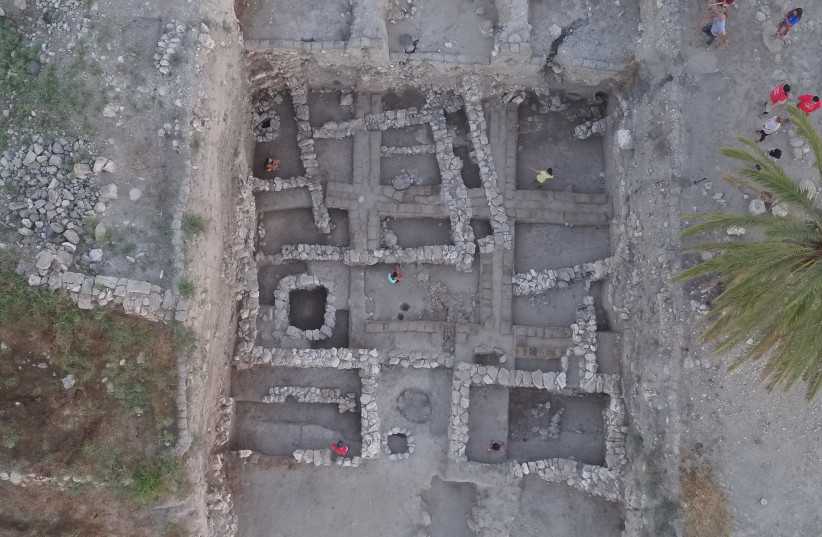 Warszawa, 12.06.2019. Monika Krawczyk odbierająca nagrodę przewodnicząca Związku Gmin Wyznaniowych Żydowskich w RP podczas gali Dorocznych Nagród Ministra Kultury i Dziedzictwa Narodowego Fot. PAP/P. Nowak
Warszawa, 12.06.2019. Monika Krawczyk odbierająca nagrodę przewodnicząca Związku Gmin Wyznaniowych Żydowskich w RP podczas gali Dorocznych Nagród Ministra Kultury i Dziedzictwa Narodowego Fot. PAP/P. Nowak
 Monika Krawczyk powołana na dyrektora Żydowskiego Instytutu Historycznego
Monika Krawczyk powołana na dyrektora Żydowskiego Instytutu Historycznego
Daria Porycka, Olga Łozińska
Monika Krawczyk odebrała w środę w Warszawie z rąk wiceministra kultury, dziedzictwa narodowego i sportu Jarosława Sellina dokument powołujący na stanowisko dyrektora Żydowskiego Instytutu Historycznego. Pięcioletnia kadencja nowej dyrektor rozpocznie się 1 stycznia 2021 r.
Uroczystość wręczenia powołania – podpisanego w środę przez wicepremiera, ministra kultury, dziedzictwa narodowego i sportu Piotra Glińskiego – odbyła się w stołecznym kinie Kultura.
Wręczając dokument, wiceszef MKiDN Jarosław Sellin wyraził radość z tej nominacji. “Z panią Moniką Krawczyk współpracujemy od lat, zwłaszcza jeśli chodzi o ochronę materialnego dziedzictwa Żydów polskich. Pani Monika była przez kilka lat szefową Fundacji Ochrony Dziedzictwa Żydowskiego w Polsce” – powiedział. “Byłem świadkiem wielu działań podejmowanych przez tę fundację i panią Monikę osobiście, jeśli chodzi o ochronę istniejących po II wojnie światowej w Polsce synagog cmentarzy czy śladów po nich” – dodał.
Sellin zwrócił uwagę, że Krawczyk “pełniła funkcje w Zarządzie Związku Gminy Wyznaniowej Żydowskiej – była szefową tego zarządu, a teraz jest członkiem – więc zna problematykę historii i dziedzictwa polskich Żydów znakomicie”. “Jest populatyzatorką wiedzy i autorką istotnych publikacji na ten temat. Zadania tak ważnej instytucji jak ŻIH – który istnieje od 1947 r. i jest najstarszą instytucją kulturalną i naukową jednocześnie zajmującą się tą problematyką – będą pod kierunkiem pani Moniki Krawczyk kontynuowane i rozwijane” – dodał. Zapewnił również, że jest pod wrażeniem programu przedstawionego przez Krawczyk.
Wiceszef MKiDN wspomniał, że powołanie Krawczyk poparły m.in. związki zawodowe ŻIH-u, Forum Żydów Polskich, Stowarzyszenie Żydowskie Cukunft z Wrocławia, Fundacja Chasydów Leżajsk – Polska, Towarzystwo Społeczno-Kulturalne Żydów w Polsce, które w uzasadnieniu podkreślało, że atutem Krawczyk jest znajomość języka hebrajskiego.
Nowo powołana dyrektor ŻIH wyraziła wdzięczność za powierzenie jej tak ważnego stanowiska. Jak podkreśliła, program dla instytucji przygotowała we współpracy “z wybitnymi naukowcami zajmującymi się historią Żydów polskich”. “Będziemy realizować bardzo ambitny program, który stawia na dialog jak najbardziej, na poznanie wielu wątków historii Żydów polskich, które nie były może dogłębnie badane – oczywiście nie zapominając o problematyce, która interesuje wszystkich najbardziej, tj. historii odnoszącej się do II wojny światowej” – mówiła.
Dodała, że ŻIH skupi się na przekrojowym podejściu do dorobku Żydów polskich nie tylko w sferze polityczno-kulturalnej i takiej, która jest badana tradycyjnie, ale też będzie chciał badać rolę duchowości polskich Żydów. “Będziemy chcieli poznać wątki, które do tej pory nie były powszechnie badane. Mamy projekt przybliżenia polskiej publiczności ksiąg pamięci, które powstawały i były tworzone przez polskich Żydów” – poinformowała.
Krawczyk zaznaczyła, że jej zadaniem będzie “takie ukształtowanie warunków pracy, aby w jak najlepszy sposób można było stworzyć warunki korzystne” dla pracowników i prowadzących badania, a także “umiędzynarodowienie placówki, aby stała się wiodącą instytucją historyczną na świecie”. Wyraziła również nadzieję, że pogłębiane będzie partnerstwo z Yad Vashem, Muzeum Holokaustu w Waszyngtonie i innymi ważnymi ośrodkami.
“Będziemy starali się w najlepszej atmosferze kształtować dialog polsko-żydowski, wpływać też na inne wątki, które przedstawiłam w swoim programie, nie zapominając o tak mi drogiej materialnej spuściźnie polskich Żydów. To, co jeszcze jest do uratowania, będziemy chcieli wyeksponować, przynajmniej udokumentować, ale tak, żeby też te wątki historyczne stały się powszechnie dostępne w społeczeństwie” – wyjaśniła. Zapewniła jednocześnie, że chciałaby rozwijać “bogaty program edukacyjny” tej placówki.
Monika Krawczyk jest adwokatem, autorką prac naukowych i publicystką zajmującą się tematem Zagłady Żydów polskich. Od 2004 r. do 2019 r. była dyrektorem zarządzającym Fundacji Ochrony Dziedzictwa Żydowskiego, od stycznia do września 2019 r. – przewodniczącą Związku Wyznaniowego Gmin Żydowskich, a obecnie – członkiem Zarządu ZWGŻ. Od 2015 r. do 2017 r. była członkiem Rady Konsultacyjnej przy Mazowieckim Wojewódzkim Konserwatorze Zabytków, a od 2014 r. do 2018 r. uczestniczyła w pracach Rady Społecznej przy dyrektorze Muzeum Historii Żydów Polskich Polin. Za zasługi w dziedzinie dziedzictwa kulturowego w 2010 r. została odznaczona Krzyżem Oficerskim Orderu Odrodzenia Polski. W 2019 r. otrzymała doroczną Nagrodę Ministra Kultury i Dziedzictwa Narodowego. (PAP)
Zawartość publikowanych artykułów i materiałów nie reprezentuje poglądów ani opinii Reunion’68,
ani też webmastera Blogu Reunion’68, chyba ze jest to wyraźnie zaznaczone.
Twoje uwagi, linki, własne artykuły lub wiadomości prześlij na adres:
webmaster@reunion68.com



